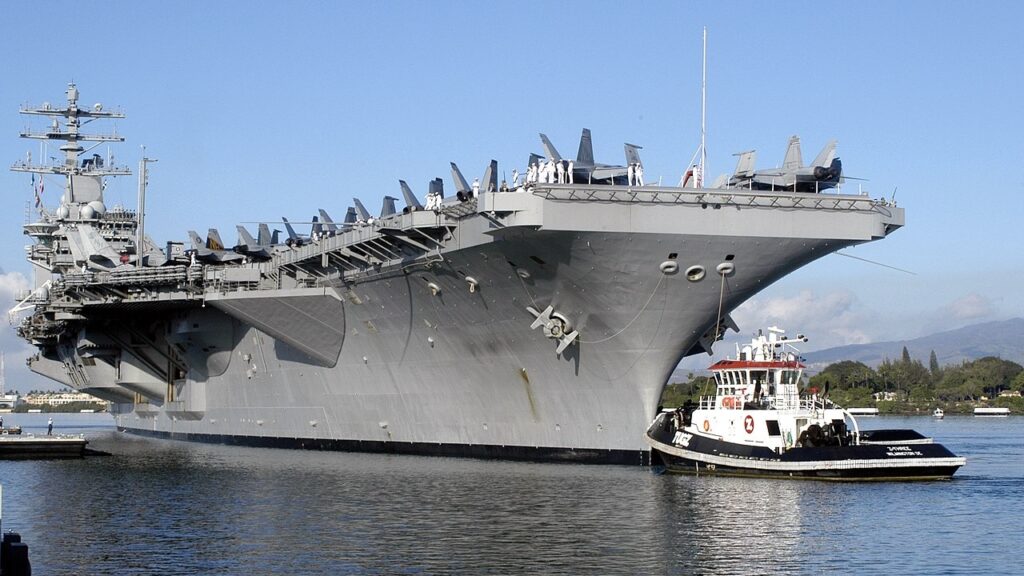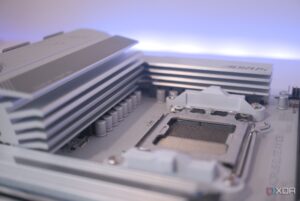
The US Navy is grappling with significant delays in ship construction and maintenance, which threaten its operational readiness. The future USS John F. Kennedy (CVN-79), a crucial addition to the fleet, is now expected to be two years behind schedule, with delivery pushed to at least March 2027. This situation reflects broader issues within the Navy’s shipbuilding program, affecting not only supercarriers but also amphibious assault ships.
The delays in delivering the USS John F. Kennedy stem from various factors, including complications associated with the Advanced Arresting Gear and Advanced Weapons Elevator systems. These technological challenges, compounded by the continuing effects of the COVID-19 pandemic on production and supply chains, have hindered the timely completion of the vessel.
Impacts on Future Ship Deliveries
In addition to CVN-79, the delivery date for the next Gerald R. Ford-class carrier, the future USS Enterprise (CVN-80), has been postponed from September 2029 to July 2030. According to recently released budget documents from the Department of Defense (DoD) for Fiscal Year 2026, the next two America-class amphibious assault ships, the future USS Bougainville (LHA-8) and USS Fallujah (LHA-9), are now running a year behind schedule as well. Worker shortages at HII’s Ingalls Shipbuilding facility in Pascagoula, Mississippi, have further contributed to delays, with LHA-9 expected to be delivered in September 2030, a full year later than previously anticipated.
A Navy spokesperson assured that efforts are ongoing to deliver both Bougainville and Fallujah with the necessary capabilities for warfighters as soon as possible. The latest amphibious assault ship delivered to the US Navy, the USS Tripoli (LHA-7), also faced significant delays before its commissioning.
Concerns Over Fleet Readiness
These delays have critical implications for the US Navy’s ability to project power globally. The impending retirement of the USS Nimitz (CVN-68) next year will reduce the active fleet of aircraft carriers from 11 to 10. Compounding the issue, the Refueling and Complex Overhaul (RCOH) for the USS John C. Stennis (CVN-74) is also behind schedule, with completion now expected by the end of 2026 instead of August 2025. The USS Harry S. Truman (CVN-75) will subsequently enter RCOH, sidelining it for several years.
In a previous effort to reduce costs, the Navy considered retiring the USS Harry S. Truman ahead of schedule, which would have saved approximately $30 billion over 25 years. However, this plan faced opposition from Congressional lawmakers and was ultimately blocked by former President Donald Trump.
The Navy is also experiencing a shortage of amphibious assault ships after the USS Bonhomme Richard (LHD-6) was decommissioned following a catastrophic fire in July 2020 that caused around $2 billion in damage. The USS Wasp (LHD-1) is currently undergoing maintenance and modernization and is not expected to return to active service until at least February 2026. Additionally, the USS Bataan (LHD-5) is slated for completion of its current dry dock work by May 2026.
A December report from the Government Accountability Office (GAO) highlighted that the US Navy’s amphibious assault ships have a readiness rate of only 46 percent, which is below the required 50 percent for deployment. This low readiness rate raises concerns about the Navy’s overall operational capabilities.
Adding to the challenges, the USS Boxer (LHD-4) encountered mechanical issues and had to return to port shortly after deployment in April 2024. While repairs have allowed the ship to return to service, the ongoing maintenance needs indicate further challenges ahead.
The US Navy’s current situation underscores the urgent need to address construction delays, maintenance inefficiencies, and reliability issues across its fleet. The ability to deploy effective naval forces when needed remains a critical concern for national security.







